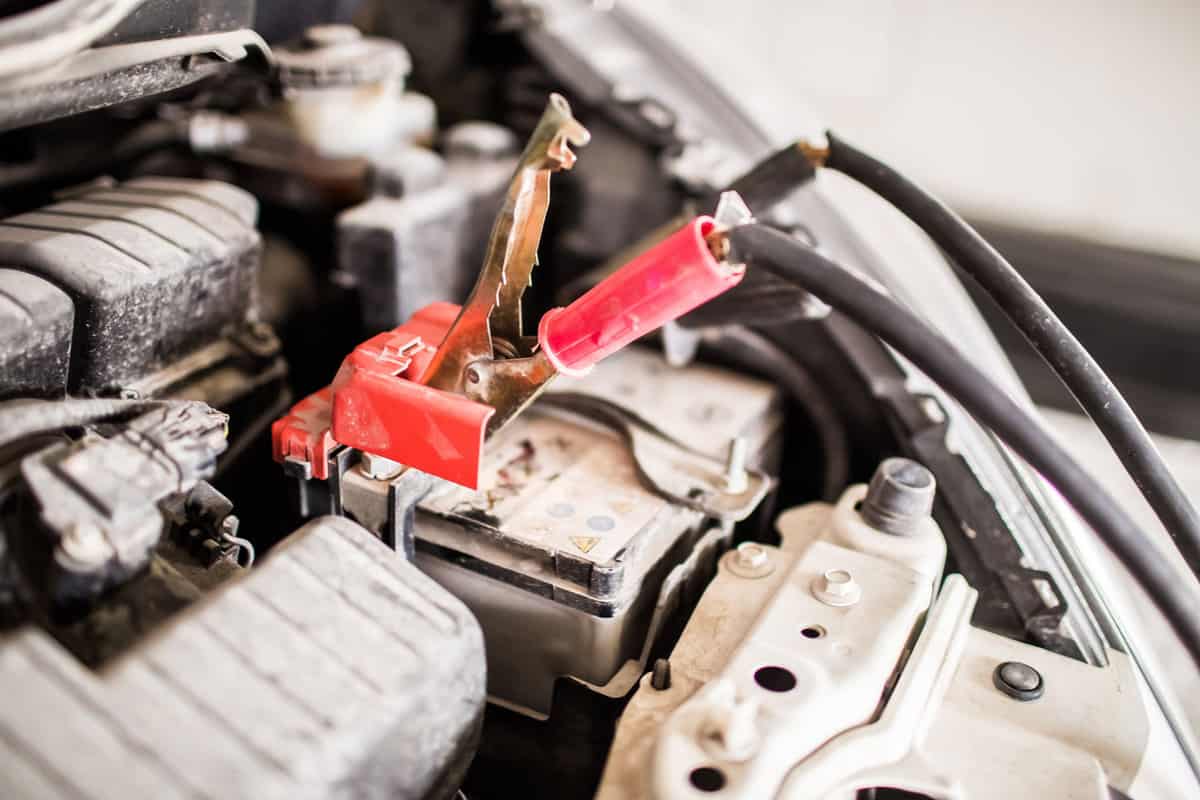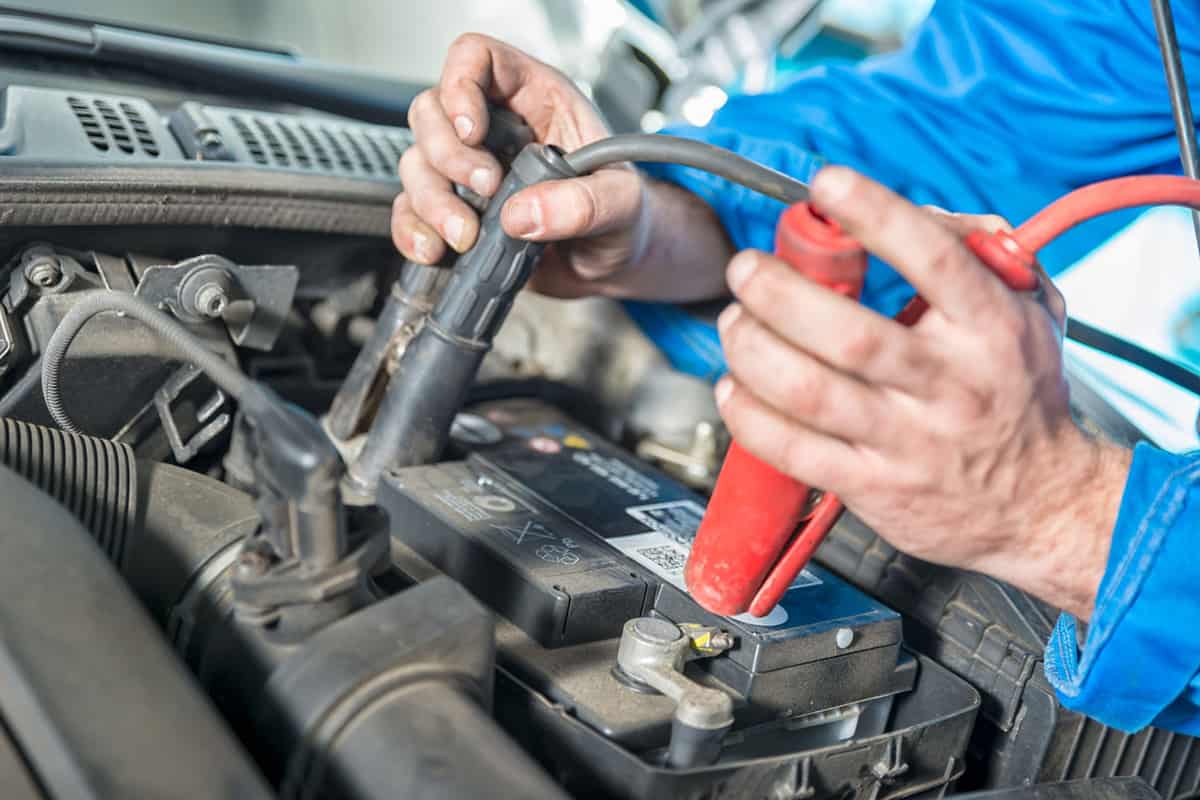How long can a deep cycle battery last without charging? This question takes center stage as we delve into the fascinating world of deep cycle batteries, exploring their construction, operation, and the factors that influence their lifespan. Join us on this journey of discovery, where we uncover the secrets of maximizing battery performance and extending its longevity.
Deep cycle batteries are designed to withstand repeated discharges and recharges, making them ideal for various applications. Understanding how long they can last without charging is crucial for optimizing their usage and ensuring reliable power when needed most.
Battery Basics
Deep cycle batteries are a type of rechargeable battery designed to provide consistent power over a long period of time. They are commonly used in applications such as electric vehicles, golf carts, and marine equipment.
Deep cycle batteries are constructed using a series of lead plates submerged in an electrolyte solution. When the battery is charged, the lead plates become coated with lead sulfate. When the battery is discharged, the lead sulfate is converted back into lead and the electrolyte solution becomes sulfuric acid.
This process can be repeated over and over again, providing the battery with a long lifespan.
Types of Deep Cycle Batteries
There are three main types of deep cycle batteries:
- Flooded lead-acid batteriesare the most common type of deep cycle battery. They are relatively inexpensive and have a long lifespan. However, they are also heavy and require regular maintenance.
- AGM batteries(absorbed glass mat) are a type of sealed lead-acid battery. They are more expensive than flooded lead-acid batteries, but they are also lighter and require less maintenance.
- Gel batteriesare another type of sealed lead-acid battery. They are the most expensive type of deep cycle battery, but they also have the longest lifespan and are the most resistant to damage from overcharging or overdischarging.
Factors Affecting Battery Life

The longevity of a deep cycle battery without charging is influenced by a multitude of factors. Understanding these factors empowers us to optimize battery performance and extend its lifespan.
Key factors affecting battery life include discharge depth, temperature, usage patterns, and maintenance practices.
Discharge Depth
Discharge depth refers to the percentage of a battery’s capacity that is utilized during each discharge cycle. Higher discharge depths reduce the battery’s lifespan. Limiting discharge depth to 50% or less significantly extends battery life compared to discharging to 80% or more.
Temperature
Extreme temperatures can harm deep cycle batteries. High temperatures accelerate battery degradation, while low temperatures reduce battery capacity. Optimal operating temperatures range from 20°C to 25°C (68°F to 77°F). Exposing batteries to temperatures outside this range shortens their lifespan.
Usage Patterns
Frequent and deep discharges can reduce battery life. Avoiding rapid charging and discharging cycles prolongs battery life. Additionally, allowing the battery to fully charge before use and avoiding complete discharge enhances its longevity.
Maintenance and Storage
Proper maintenance and storage practices are crucial for maximizing battery life. Regular cleaning of battery terminals prevents corrosion and ensures optimal performance. Storing batteries in a cool, dry place with a moderate charge level minimizes self-discharge and extends their lifespan.
Estimating Battery Life
Calculating the estimated lifespan of a deep cycle battery involves understanding its capacity, discharge rate, and the depth of discharge.
The battery’s capacity, measured in amp-hours (Ah), indicates the amount of electrical charge it can store. The discharge rate, measured in amps (A), represents the rate at which the battery discharges. The depth of discharge (DOD) refers to the percentage of the battery’s capacity that is discharged during each use.
If you’re considering getting Pirelli P Zero tires, you might wonder about their lifespan. To know how long Pirelli P Zero tires last , check out this article for detailed information. Additionally, if you’re an avid motorcyclist, understanding how long to charge motorcycle battery while riding is crucial to avoid getting stranded.
By knowing these crucial details, you can ensure a safe and enjoyable driving experience.
Battery Capacity
The battery’s capacity determines the amount of time it can power a load. A higher capacity battery will last longer than a lower capacity battery when powering the same load.
Battery capacity can be calculated using the following formula:
Capacity (Ah) = Discharge Time (hours) x Discharge Current (A)
Maintaining a motorcycle requires regular care and attention to its components. If you’re planning a long ride, understanding how long to charge motorcycle battery while riding becomes crucial. The duration depends on factors like battery capacity, charging system, and riding conditions.
Similarly, tires are essential for safety and performance. If you’re curious about the lifespan of high-performance tires, check out how long do pirelli p zero tires last to learn about their durability and optimal replacement intervals.
Discharge Rate, How long can a deep cycle battery last without charging
The discharge rate determines how quickly the battery discharges. A higher discharge rate will result in a shorter battery life than a lower discharge rate.
Discharge rate can be calculated using the following formula:
Discharge Rate (A) = Load Power (W) / Battery Voltage (V)
Depth of Discharge
The depth of discharge affects the battery’s lifespan. Deeper discharges shorten the battery’s life, while shallower discharges prolong it.
The following table illustrates the relationship between discharge depth and battery life:
| Discharge Depth (%) | Battery Life (cycles) |
|---|---|
| 20 | 1000-1500 |
| 50 | 500-700 |
| 80 | 200-300 |
Practical Applications
Deep cycle batteries find widespread use in off-grid systems, backup power supplies, and marine applications where frequent charging is impractical or impossible.
These batteries are designed to deliver sustained power over extended periods, making them ideal for scenarios where reliable energy storage is crucial.
Off-Grid Systems
- Deep cycle batteries are the backbone of off-grid solar and wind power systems, providing reliable power to remote cabins, RVs, and boats.
- They store excess energy generated during the day for use at night or during periods of low sunlight/wind.
- Proper battery sizing and maintenance are critical to ensure sufficient power and longevity in off-grid applications.
Backup Power Supplies
- Deep cycle batteries serve as emergency backup power sources for homes, businesses, and critical infrastructure.
- In the event of a grid outage, these batteries provide power to essential appliances, medical equipment, and security systems.
- The capacity and duration of backup power depend on the battery’s size and the load it powers.
Marine Applications
- Deep cycle batteries are essential for powering marine electrical systems, including navigation, lighting, and bilge pumps.
- They provide reliable power in harsh marine environments, withstanding vibration, moisture, and temperature fluctuations.
- Proper battery maintenance and charging practices are crucial to ensure optimal performance and longevity in marine applications.
Extending Battery Life: How Long Can A Deep Cycle Battery Last Without Charging

Extending the lifespan of deep cycle batteries without charging is crucial for maintaining optimal performance and longevity. Implementing proper charging techniques, equalization procedures, and storage recommendations can significantly enhance battery life.
Regular maintenance is also essential to ensure the battery’s health and performance. By following these strategies, you can maximize the lifespan of your deep cycle battery and enjoy its benefits for an extended period.
Proper Charging Techniques
- Charge Regularly:Prevent deep discharges by charging the battery regularly, even when not in use. Aim for a charge level between 50% and 80% to maintain optimal performance.
- Use a Suitable Charger:Choose a charger specifically designed for deep cycle batteries, as they provide the correct voltage and current levels.
- Monitor Charging:Use a battery monitor to track the charging process and ensure the battery is fully charged without overcharging.
Equalization Procedures
- Equalize Periodically:Equalization is a process that balances the charge levels of individual cells within the battery, preventing sulfation and extending battery life. Perform equalization every 3-6 months.
- Use an Equalizer:Use an equalization charger or follow the manufacturer’s instructions for manual equalization procedures.
- Monitor Equalization:Monitor the battery voltage during equalization to ensure it reaches the recommended levels.
Storage Recommendations
- Store in a Cool, Dry Place:Store the battery in a well-ventilated area with a temperature between 50°F and 70°F (10°C and 21°C) to minimize self-discharge.
- Maintain a Charge:Keep the battery partially charged during storage. Aim for a charge level between 50% and 80%.
- Check Regularly:Periodically check the battery voltage during storage to ensure it remains within the recommended range.
Maintenance Checklist
- Clean battery terminals regularly to prevent corrosion.
- Inspect cables and connections for any damage or loose connections.
- Monitor battery fluid levels (for flooded batteries) and add distilled water as needed.
- Avoid deep discharges and overcharging.
- Follow the manufacturer’s recommended maintenance schedule.
Final Thoughts
In conclusion, the lifespan of a deep cycle battery without charging is influenced by a multitude of factors, including discharge depth, temperature, usage patterns, and maintenance practices. By understanding these factors and implementing strategies to prolong battery life, we can maximize its performance and enjoy the benefits of reliable power for extended periods.
Remember, proper charging techniques, equalization procedures, and regular maintenance are key to extending the lifespan of your deep cycle battery. By following these guidelines and incorporating the tips and tricks discussed throughout this article, you can ensure optimal battery performance and enjoy peace of mind knowing that your power source is ready when you need it most.
Essential Questionnaire
How do I calculate the lifespan of my deep cycle battery?
To estimate the lifespan of your deep cycle battery, consider factors such as discharge depth, temperature, and usage patterns. Use formulas and equations to determine the battery’s capacity and discharge rate, and refer to tables that illustrate the relationship between discharge depth and battery life.
What are some practical applications where deep cycle batteries are used without frequent charging?
Deep cycle batteries are commonly used in off-grid systems, backup power supplies, and marine applications. In these scenarios, batteries are often required to provide power for extended periods without frequent charging.
How can I prolong the lifespan of my deep cycle battery?
To extend the lifespan of your deep cycle battery, implement proper charging techniques, perform equalization procedures, and follow recommended storage practices. Additionally, regular maintenance tasks, such as cleaning terminals and checking water levels, can help ensure optimal battery performance.
